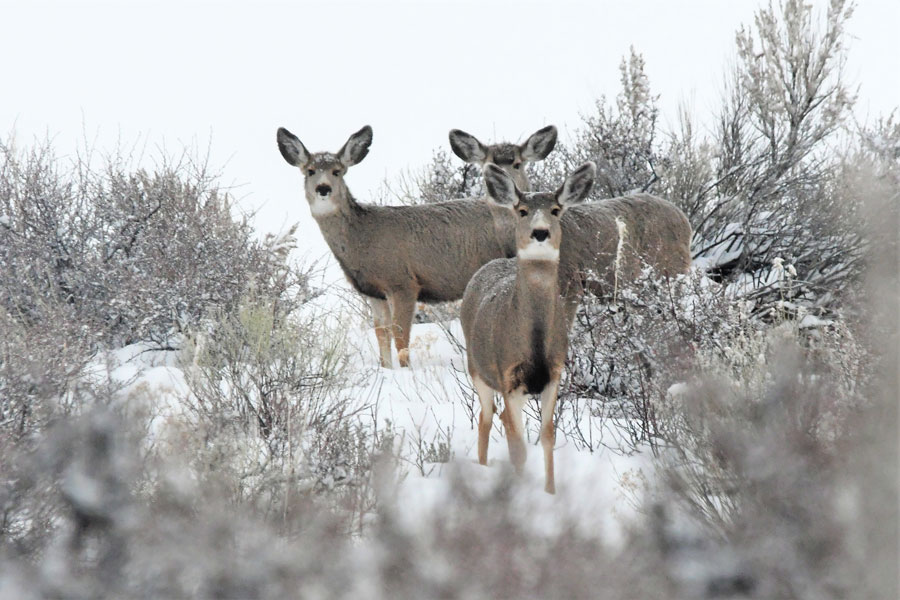A look at mule deer migrating to the desert
Published at | Updated at
Two large muley bucks were sparring over a late season doe on a ridge butted up against a large sand dune. Soon two younger bucks joined the group as they headed into one of the many ravines just off the White Sands Road running between the Red Road and the Sand Creek Road.
The snow was knee deep for me and the deer, making it difficult for me as I would drive a short distance, sneak over a ridge or two looking for deer, elk or moose. The elk were still high on Big Bend Ridge along with most of the moose. A few moose cows and calves had migrated down with the mule deer leaving the bulls up near the elk.

As each storm increased the snow depth during late November and early December, the migration of deer from Island Park to desert continued to grow. Most of the deer I observed were small bucks, does and fawns, but after the late buck season closed on Nov. 30, the larger bucks began to get less cautious adding to my desire to stalk them.
The deer congregated in herds of up to 15 in the pockets of tall sagebrush between the sands during the first week of December allowing me to observe and photograph them.
I would station myself near a well-used path and wait for them in the early morning or late evening. The larger bucks never came near where I was, making me shoot pictures of them from a distance while does and fawns came by my hiding spot. Several of the female deer that wandered by were wearing radio collars placed on them last winter north of the St. Anthony landfill.

One morning while hiding near a grove of aspen a flock of sharp-tailed grouse flew into the trees and entertained me for about half an hour. I also saw about 100 American robins and Townsend’s solitaries working the junipers and scrub chokecherry bushes.
The snow depth grew deeper along the Sand Creek Road than the Red Road, forcing the deer to move toward the Junipers west of the Red Road. On the evening of Dec. 12 a herd of 22 mule deer had moved into the junipers just east of the Sand Hills recreation area.

This migration of deer allowed me to spend hours watching and studying them as they interacted with each other. One doe appeared to be late in coming into her rutting cycle and had six bucks including two large ones chasing her over the ridges. She probably had the pick of any fella on the desert for her rutting delay. Boys can act pretty silly when there is a beautiful gal around.
Most of the area will close for all human activity on January 1, and I will have to find other kinds of entertainment on my free days. But until then I will try to sneak close enough to enjoy the mule deer while they run and play across the sage covered sand hills. Most of the area will be closed until sunrise on May 1, 2019 for us humanoids.


Living the Wildlife is brought to you by Yellowstone Teton Territory. Experience 7,500 square miles of untamed wilderness in Eastern Idaho's Yellowstone Teton Territory. Where majestic peaks meet endless adventure, your perfect outdoor escape is waiting. Start planning at YellowstoneTeton.com.



